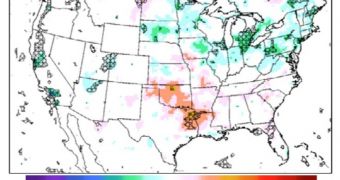Studies experts conducted thus far have revealed that installing white roofs and roads has the potential to reduce the warming experienced in urban areas. In a new study, investigators analyze the atmospheric feedback these measures have, and conclude that they are largely positive.
Past investigations did not take into account how installing white roofs and roads would change the atmosphere above the cities. Changes in surface reflectivity have a direct influence on cloud formation and precipitation patterns over a given area.
Researchers at the US Department of Energy's (DOE) Lawrence Berkeley National Laboratory (Berkeley Lab) recently used a high-resolution computer model to analyze these effects, and found that some negative side-effects are produced.
However, the effect was positive overall. Installing white roofs and road actually changes the amount of heat that gets trapped in urban areas, allowing each individual home or road to fight against global warming and the climate change it produces.
The new study was conducted by Berkeley Lab researchers Dev Millstein and Surabi Menon. The team says that the amount of cooling white roofs produce differs between cities. In other words, it is not a fixed value, but depends on the particularities of the urban landscape.
Details of the new investigation appear in the latest issue of the esteemed scientific journal Environmental Research Letters. The work builds on past results obtained by another Berkeley Lab research, conducted a few years back.
“Although further studies based on varying assumptions are required to validate our results, our modeling indicated cool roofs are not necessarily as effective in a city like Dallas as in a city like Los Angeles,” Millstein explains.
“In places near Dallas and parts of the southeast, the absence of summer cooling is associated with less rainfall and more sun reaching the surface – fewer clouds and more Sun, basically,” he goes on to say.
“Still, no major urban area saw any significant warming due to feedback effects,” adds the scientist, who is a postdoctoral fellow in the Atmospheric Sciences Department at Berkeley Lab.
Painting roofs white can help defend against the urban heat island effect. This makes cities several degrees warmer than their surroundings. In some major cities, it is common for winter to be entirely without snow. By the time the snowflakes reach the city, they turn to rain.
“Even when you take feedback into account, cool roofs are still beneficial for most places. With the exceptions, there may be more study needed. The southeast is certainly not ruled out as a candidate for cool roofs,” Millstein explains.

 14 DAY TRIAL //
14 DAY TRIAL //